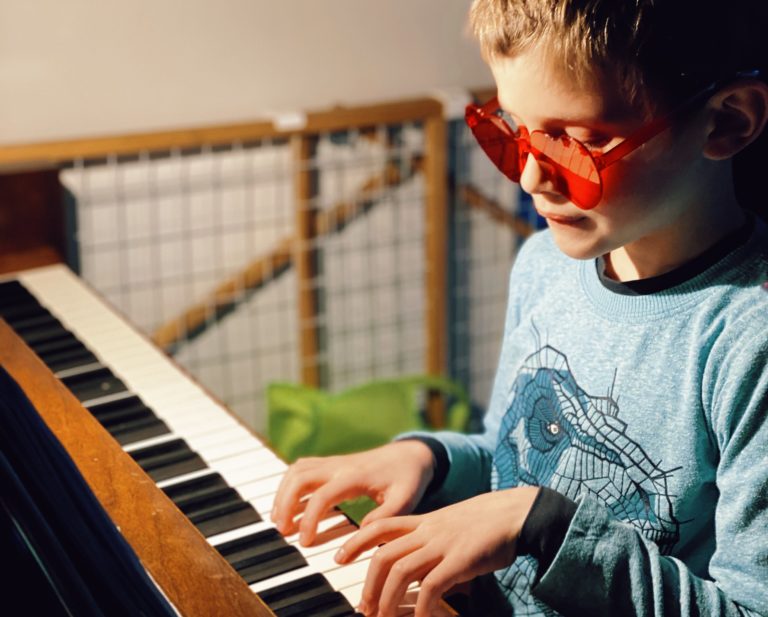
How do you motivate a child (or yourself) to practice more often? Here are a few strategies to try.
- Choose a consistent time. Classic habit-building advice: build your practice into your day’s schedule, and give it priority, so that it’s sure to get done. Right before school or right after school are easy times for many students. See also: right before bedtime, if you were a night owl like myself.
- Keep track of your practice. More classic habit-building advice! Hang a calendar next to your piano, or add piano practice to the week’s chore list. Seeing practice success is motivating.
- Begin with a small goal. If doing anything seems too overwhelming, we will shy away from it. What gets us from the idea of practicing, to the end of a practice session? Sometimes I encourage students to just get to the bench. The act of sitting on the bench will hopefully lead us opening a book to practice. (Maybe it’s helpful to even leave a book open on the music stand.) Begin with a 5 or 10-minute daily practice goal, and grow from there.
- Put the piano in a comfortable room. Is the piano in the basement or in the living room? Maybe it’s too “out of the way”, or in an uncomfortable part of the house. Just seeing the piano is motivating for many students, and can encourage “drive by” practicing, when they stop and play for a few minutes, just because it’s in their immediate environment. The more visible, the better.
- Make sure the instrument works properly. Is the piano out of tune? Are there keys that don’t work? Is the pedal broken or squeaky? Is the bench uncomfortable for any reason? All of these factors can make the instrument frustrating to play, rather than enjoyable.
- Find an instrument that the student enjoys playing. I will write a separate article about this, but there really isn’t a similar feeling to playing a real piano. There are myriad varieties of keyboards that all have wonderful purposes, in particular, for playing outside of the home, or for playing different styles of music. A keyboard provides a great alternative to a piano, for cost and space reasons, but for a longterm student, keyboards aren’t as effective for learning piano technique. A piano provides a tone and a fullness that will give back to the player in a deeper and more fulfilling way.
- Build positive reinforcement around practice. I used to give a lot of lectures to my students about practicing, and I’m giving it up. However, I will remind a student of the positive effects of practicing. I will provide practice guidelines and suggestions, and give them positive reinforcement when they do practice, or play beautifully. When I was young, a nice compliment from my parents and grandparents went a long way, for example: “I love that piece!” or “I love to hear you play.”
- Implement a rewards system. While making music is inherently rewarding, there are moments in our learning process that require an extra push. Plateaus are an expected part of the learning process, and to see what’s on the other side of them, I absolutely encourage an easy rewards system that works for you and your family. You might even put a time limit on that offer, so that it’s not something that you’re required to do “forever.” (For example, if a student practices for 20 days in a month, then they get to… go see a movie, or whatever sounds fun!)
- Learn something new yourself. If you’re a parent who’s interested in developing new skills, you will have children who will see that quality and understand that deeply learning anything has a process. Maybe you want to take piano lessons too, or maybe you want to take up painting or learn a new language. Allowing your child to see your learning process will help them to see that perfection is never required, and that learning a new skill is forever a life-enriching practice.